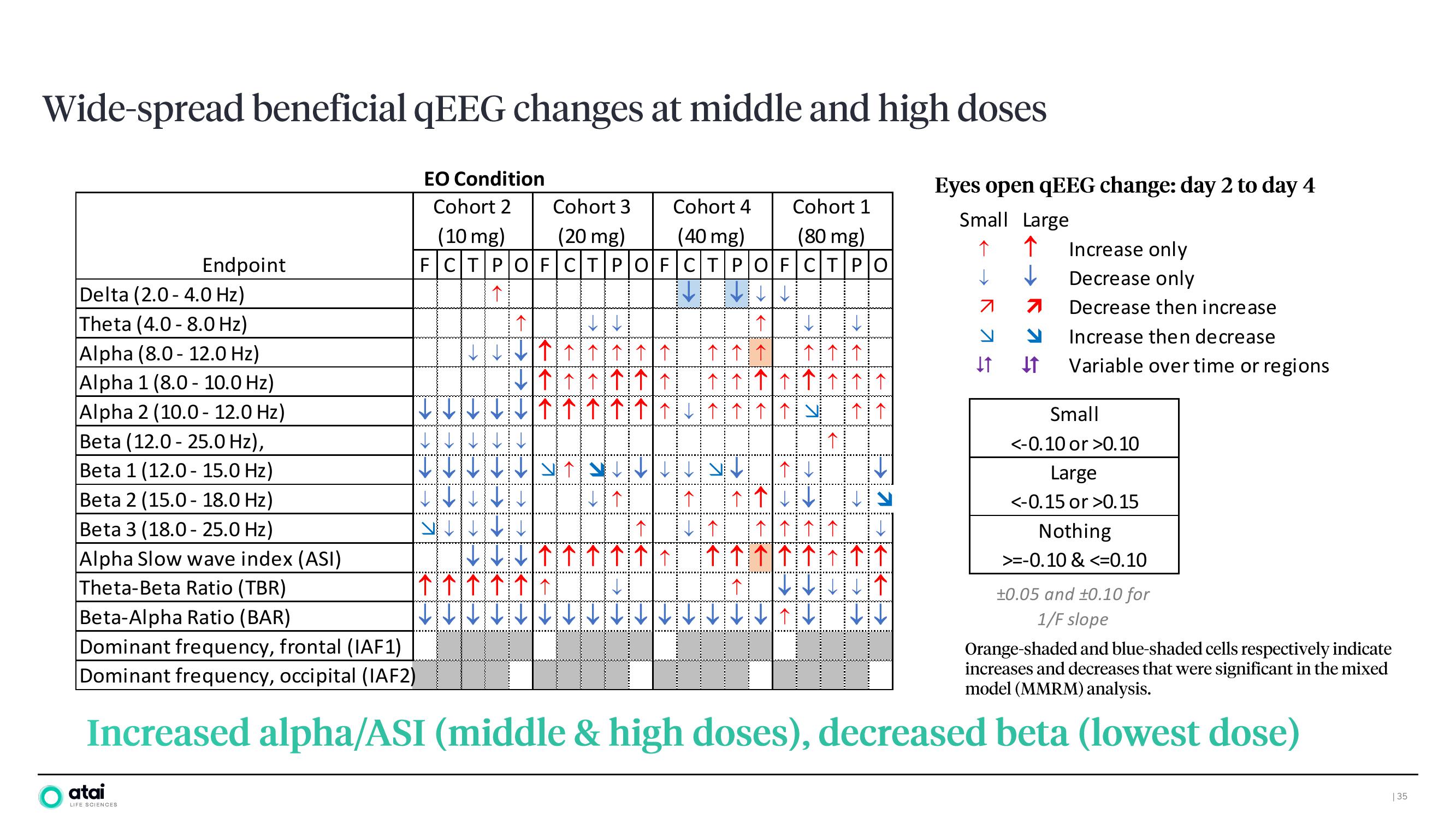ATAI Investor Day Presentation Deck
Wide-spread beneficial qEEG changes at middle and high doses
Endpoint
Delta (2.0-4.0 Hz)
Theta (4.0- 8.0 Hz)
Alpha (8.0-12.0 Hz)
Alpha 1 (8.0-10.0 Hz)
Alpha 2 (10.0-12.0 Hz)
Beta (12.0 25.0 Hz),
Beta 1 (12.0-15.0 Hz)
Beta 2 (15.0- 18.0 Hz)
Beta 3 (18.0- 25.0 Hz)
Alpha Slow wave index (ASI)
Theta-Beta Ratio (TBR)
Beta-Alpha Ratio (BAR)
Dominant frequency, frontal (IAF1)
Dominant frequency, occipital (IAF2)
EO Condition
Cohort 2
atai
LIFE SCIENCES
Cohort 4 Cohort 1
(40 mg) (80 mg)
(10 mg)
FCT POFCTPOFCTPOFCTPO
个
↑
↓↓
↓↓↓↑↑↑↑↑↑↑↑↑
↓↓↓↓↓
Cohort 3
(20 mg)
↓↓↓↓↓↓↓ ↑↓
↓↓↓↓↓
↓↓↓↓
111111↑↑↑↑↑↑↑↑↑
个一个
个
↓↑↑↑↑↑↑↑↑↑↑↑↑↑↑
JIJIN
NNNNNNNNNNNNNNNTNINN
Eyes open qEEG change: day 2 to day 4
Small Large
↑
↓
→ S
↓↑
7
V
↓↑
Increase only
Decrease only
Decrease then increase
Increase then decrease
Variable over time or regions
Small
<-0.10 or >0.10
Large
<-0.15 or >0.15
Nothing
>=-0.10 & <=0.10
+0.05 and ±0.10 for
1/F slope
Orange-shaded and blue-shaded cells respectively indicate
increases and decreases that were significant in the mixed
model (MMRM) analysis.
Increased alpha/ASI (middle & high doses), decreased beta (lowest dose)
| 35View entire presentation